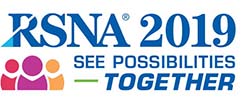

ParticipantsBenjamin Musall, BS, Houston, TX (Presenter) Nothing to Disclose
Jingfei Ma, PhD, Houston, TX (Abstract Co-Author) Royalties, Siemens AG; Royalties, General Electric Company; Consultant, C4 Imaging
Beatriz E. Adrada, MD, Houston, TX (Abstract Co-Author) Nothing to Disclose
Abeer H. Abdel Hameed, MBChB, Houston , TX (Abstract Co-Author) Nothing to Disclose
Rosalind P. Candelaria, MD, Houston, TX (Abstract Co-Author) Nothing to Disclose
Wei T. Yang, MD, Houston, TX (Abstract Co-Author) Royalties, Reed Elsevier
Kenneth Hess, PhD, Houston, TX (Abstract Co-Author) Nothing to Disclose
Lumarie Santiago, MD, Houston, TX (Abstract Co-Author) Nothing to Disclose
Gary J. Whitman, MD, Houston, TX (Abstract Co-Author) Nothing to Disclose
H. Carisa Le-Petross, MD, FRCPC, Houston, TX (Abstract Co-Author) Nothing to Disclose
Tanya W. Moseley, MD, Houston, TX (Abstract Co-Author) Consultant, Hologic, Inc
Elsa M. Arribas, MD, Houston, TX (Abstract Co-Author) Scientific Advisory Board, Volumetric Biotechnologies, Inc; Stockholder, Volumetric Biotechnologies, Inc
Deanna L. Lane, MD, Houston, TX (Abstract Co-Author) Nothing to Disclose
Jessica W. Leung, MD, Houston, TX (Abstract Co-Author) Scientific Advisory Board, Subtle Medical
Marion E. Scoggins, MD, Houston, TX (Abstract Co-Author) Institutional Research Grant, General Electric Company
Mark D. Pagel, PhD, Houston, TX (Abstract Co-Author) Nothing to Disclose
Ken-Pin Hwang, PHD, Houston, TX (Abstract Co-Author) Nothing to Disclose
Jong Bum Son, PhD, Houston, TX (Abstract Co-Author) Nothing to Disclose
Jason White, Houston, TX (Abstract Co-Author) Nothing to Disclose
Jennifer Litton, Houston, TX (Abstract Co-Author) Nothing to Disclose
Senthil Damodaran, Houston, TX (Abstract Co-Author) Nothing to Disclose
Bora Lim, MD, Houston , TX (Abstract Co-Author) Nothing to Disclose
Brandy J. Willis, MBA,RT, Houston, TX (Abstract Co-Author) Nothing to Disclose
Hagar S. Mahmoud, MBBCh, Alexandria, Egypt (Abstract Co-Author) Nothing to Disclose
Ayah A. Megahed, MBBCh, Cairo, Egypt (Abstract Co-Author) Nothing to Disclose
Alastair Thompson, Houston, TX (Abstract Co-Author) Nothing to Disclose
Stacy Moulder, MD, Houston, TX (Abstract Co-Author) Research funded, AstraZeneca PLC Research funded, F. Hoffmann-La Roche Ltd Research funded, Oncothyreon Research funded, Novartis AG Research funded, Merck KGaA
Gaiane M. Rauch, MD, PhD, Houston, TX (Abstract Co-Author) Nothing to Disclose
bcmusall@mdanderson.org
PURPOSEIn TNBC, non-pCR has high risk of recurrence. We evaluated the dependence of the quantitative tumor volumes for predicting pCR status in TNBC on the temporal resolution of DCE MRI.
METHOD AND MATERIALSIn the ARTEMIS trial (NCT02276443), TNBC pts receive 4 cycles of Adriamycin-based chemo (C4AC) followed by taxane-based NACT. 35 pts underwent fast DCE-MRI with range of temporal resolution 8-49 s at baseline (BL) and after C4AC. A retrospective cohort (RC) of 50 TNBC pts who had NACT and BL standard DCE-MRI (temporal resolution 90-120 s) was compared. For all pts pCR was assessed at surgery. 3-dimensional tumor measurements were obtained and tumor volume was contoured by a breast radiologist on the early subtraction phase. Clinical tumor volume (CTV) was calculated using 3 tumor dimensions. Enhanced tumor volume (ETV) was extracted as volume of the contoured voxels, and functional tumor volume (FTV) was extracted as the subset of ETV with voxels below preset signal enhancement ratio (SER). CTV, ETV, FTV, and their changes between BL and C4AC scans were compared between pCR and non-pCR using Receiver Operator Characteristic (ROC) curve and Wilcoxon rank sum test.
RESULTSAn optimal SER of 0.45 was found to maximize AUC of pCR vs non-pCR in ARTEMIS group. In ARTEMIS pts, CTV, ETV, and FTV at BL were able to discriminate pCR and non-pCR, with the pCR pts having significantly smaller tumor volumes (AUC = 0.75, 0.74, 0.74 and p=0.0096, 0.022, 0.022, respectively). CTV, ETV, and FTV at C4AC were significantly different between pCR and non-pCR (AUC = 0.71, 0.74, 0.75 and p=0.041, 0.017, 0.019, respectively). The changes in CTV, ETV, and FTV from BL to C4 were significantly different between pCR and non-pCR (AUC = 0.70, 0.73, 0.71 and p=0.044, 0.026, 0.038). In contrast, CTV, ETV, and FTV in the RC at BL were not significantly different between pCR and non-pCR pts (AUC=0.62, 0.54, 0.53 and p=0.16, 0.66, 0.74 respectively). Tumor volumes measured in ARTEMIS pts were smaller than in the RC (p=0.061).
CONCLUSIONQuantitative tumor volumes measured by fast DCE may serve as an early predictor of treatment response in TNBC. Standard DCE MRI with lower temporal resolution may overestimate the tumor volumes.
CLINICAL RELEVANCE/APPLICATIONTumor volumes measured with fast DCE MRI improve prediction of treatment response to NACT in TNBC in comparison with standard DCE MRI and may be useful imaging biomarkers of treatment response.